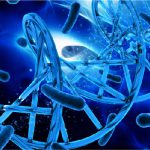What is Acute Lymphoblastic Leukemia?
Acute Lymphoid Leukemia is a type of blood cancer. It is estimated to account for about 0.3% of all the new cancer cases in 2018 with the total number of cases estimated to be around 6000. It is a rare form of cancer with an incidence of 1.7 cases per 100,000 people, based on data from 2011 to 2015. This cancer is not preventable, detection in the initial phases and swift treatment improves the patient’s chance of survival and complete recovery so it is important that one understands this disease.

The blood cells are produced in the hollow of the bone, in a soft gel like part called bone marrow. The cells produced are primitive in called stem cells and these are pluripotent in nature. Meaning, they have the potential to develop into all types of blood cells. The process of the stem cells differentiating into different types is called hematopoiesis. The stem cells differentiate into two different cell groups- the myeloids and the lymphoids.
Leukemia, a type of blood cancer, is caused by rapid production of abnormal cells and the ability of the bone marrow to produce cells is impaired. The progression of leukemia is classified as acute or chronic. The acute type spreads very fast and requires immediate treatment whereas chronic spreads slowly and the treatment need not be immediate. Depending on the cell group affected and the progression of cancer, leukemia is of four main types:
- Acute Lymphocytic Leukemia (ALL)
- Acute Myelogenous Leukemia (AML)
- Chronic Lymphocytic Leukemia (CLL)
- Chronic Myelogenous Leukemia (CML)
What happens in Acute Lymphocytic Leukemia:
ALL is a leukemia that affects the lymphoid cell group and the cancer progress quickly and is termed acute. The lymphatic system is a system of vessels, tissues and organs that transport the lymph fluid, which contains infection fighting white blood cells. The lymphatic organs include thymus, spleen, tonsils, appendix along with lymphatic tissues present at a few other organs.
The cells of the lymphatic system, lymphocytes are of two types, B lymphocytes and T lymphocytes, also called B cells and T cells. B cells make antibodies to fight against germs and other foreign bodies and T cells destroy germs and other abnormal cells and catalyze the activity of other immune system cells.
In ALL, the lymphocytes start multiplying rapidly forming diseased lymphocytes and also crowding the bone marrow decreasing the production of other blood cells. Since the lymphocytes are responsible for the immunity of the body, the immune system is affected and the body becomes susceptible to a lot of other diseases and infections in addition to the growing cancer.
Symptoms:
The symptoms vary from patient to patient depending on the stage of ALL and the areas affected, the following are some of the common symptoms.
- Weakness, fatigue or tiredness
- Easy bruising and bleeding that does not stop easily
- Headaches, dizziness, blurred vision
- Swelling of lymph nodes in and around the neck, underarm, abdomen or groin
- Frequent or severe nosebleeds, bleeding gums
- Pale skin with tiny red spots
- Unexplained weight loss, loss, loss of appetite
- Frequent infections or fever
- Difficulty in breathing, shortness of breath
- Intense pain in the bones, back or abdomen.
- Menstrual irregularities and over bleeding in women.
Risk factors:
Risk factors are the identified conditions that have higher probabilities of developing a disease. Presence of risk factor does not imply the presence of the disease, it only indicates that the chances might be higher.
- Age: ALL is the most common type of leukemia in children with the cancer being most cases in the age ranges below 15 or above 50 years.
- Ethnicity: People of Caucasian or “white” descent are more likely to develop ALL than their darker counterparts though the exact reason for this is not found out.
- Family history: The presence of ALL in the family history can mean higher chance of one’s risk of ALL, especially so in the case of siblings or twins.
- Smoking: While it definitely causes more damage to the lungs and so is a major risk factor for lung cancer, it also allows the nicotine into the bloodstream that increases the chance of acute leukemias.
- Exposure to radiation: Prolonged exposure to radiation or high intensity radiation can cause mutation of the human genes which makes cells cancerous. Previous radiation therapies increase the risk of acute leukemias.
- Genetic disorders: Genetic disorders such as the Down syndrome, Bloom syndrome, Fanconi anemia increase the risk of acute lymphocytic leukemia.
- Viruses: ALL or specific types of lymphomas are noted to be associated with a previous viral infection such as human T-cell leukemia virus-1 or the Epstein-Barr virus.
Stages of ALL:
The stage of cancer is an important parameter for deciding the course of treatment too. Generally blood cancers are divided into four stages depending on the size and spread of the cancer tumour. Leukemia originates at bone marrow and so tumours are not a characteristic of this type of cancer. Hence a different method is required for this cancer. Tests are conducted to know which subtype of ALL a person has, the main subtypes are B cell ALL and T cell ALL depending on the lymphocytes affected by cancer. B cell ALL is more common than T cell ALL. The distinction is made by a process called immunophenotyping. It is a test used to separate groups of cells and their populations based on markers.
The staging is different for B cell and T cell acute lymphocytic leukemias.
- B Cell ALL staging: With four stages, Early B cell CLL, common ALL, Pre B ALL and Mature B ALL, common ALL as the name suggests, being the most common stage.
- T Cell ALL staging: This system has two stages, Pre T ALL and Mature T ALL.
Diagnosis:
The following tests may indicate the presence of acute lymphocytic leukemia.
- Blood tests: Complete blood test can show high volumes of white blood cells, and lower numbers of red blood cells and platelets. Blasts cells may also be detected in the blood.
- Bone marrow test: Bone marrow biopsy or aspiration (removing the bone marrow sample by injecting a thin needle) can reveal the presence of cancerous cells in the bone marrow and also which type of ALL it is depending on the type of lymphocytes affected.
- Spinal fluid test: In this test, also known as lumbar puncture test, a needle is inserted in the lower back into the spinal canal to collect cerebro-spinal fluid (CSF) for testing. This can detect the presence of cancer in the spinal cord by testing the sample of the spinal fluid of leukemic cells.
Treatment:
Since the progression of cancer is rapid in acute leukemias, swift detection and treatment is crucial for the patient. The treatment for acute lymphocytic leukemia is in separate phases with the course of treatment depending on the extent of ALL, type, the patient’s response and the phase of treatment.
- Induction therapy: This is the first phase of treatment and the aim is to kill most of the leukemia cells in the blood and bone marrow to restore normal blood cell production. Chemotherapy is usually used in the induction phase.
- Consolidation therapy: Known post-remission therapy, this phase aims to destroy any remaining leukemia in the body, such as in the brain or spinal cord. Bone marrow transplant may be used for people with high risk of relapse.
- Maintenance therapy: The third phase is to prevent leukemia cells from regrowing. The treatments used in this stage are given at lower doses over a long period of time.
- Preventive treatment: Aimed at the spinal cord, patients may receive preventive treatment during each phase to either prevent or to kill the cancers cells in the central nervous system.
The treatment methods include chemotherapy, targeted therapy, radiation therapy, bone marrow transplant etc.
Survival rates:
The survival rate usually refers to the five year survival rate, meaning how many people live beyond 5 years of diagnosis out of every 100. The survival rate of ALL for all ages has increased from 41% in 1975-77 to 71% in 2007-13 period. The five year survival rate for children diagnosed with ALL is 85% and almost 98% are considered to be in remission phase within a few weeks of treatment. The older patients do not respond to treatment as well, and this trend only seems to increase with age.



